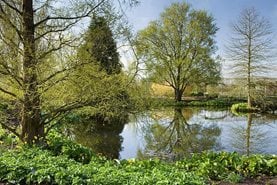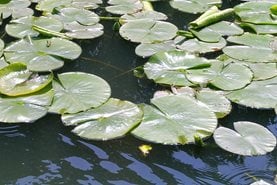 Start feeding the fish. Little and often is best, to prevent excess food leading to unwanted algal blooms. Frogs, toads and newts begin to spawn as the weather improves. Don’t be tempted to move spawn from other ponds to your pond as this can inadvertently spread amphibian diseases or invasive pond weeds.
Start feeding the fish. Little and often is best, to prevent excess food leading to unwanted algal blooms. Frogs, toads and newts begin to spawn as the weather improves. Don’t be tempted to move spawn from other ponds to your pond as this can inadvertently spread amphibian diseases or invasive pond weeds.
Remove pool heaters when the weather starts to warm. Clean out pond filters. Replace pumps, water features and lighting systems, after checking they are in working order.
Remove netting coverings placed over the pond to protect it from autumn leaf fall.
Begin dividing marginal and bog garden plants if overcrowded. Contain vigorous perennials by planting in aquatic plant baskets and top with a layer of gravel to prevent fish stirring up the compost. Cut back old marginal vegetation from around the pond.
Tidy up plants in the bog garden and mulch with composted bark (or similar material).
Troubleshooting
 New or recently-cleaned ponds can suffer problems with algae. Providing some shade (using plants with floating leaves such as waterlilies, left) can help reduce this problem.
New or recently-cleaned ponds can suffer problems with algae. Providing some shade (using plants with floating leaves such as waterlilies, left) can help reduce this problem.
Other helpful measures include filling the pond with rain water rather than tap water, avoiding getting soil or compost in the pond (as these contain fertilisers that encourage algal growth), and removing any plant debris from the water promptly.
Float barley straw pads in the water to also help reduce algae. These are best added to the pond early in the season to allow sufficient time for them to take effect.

